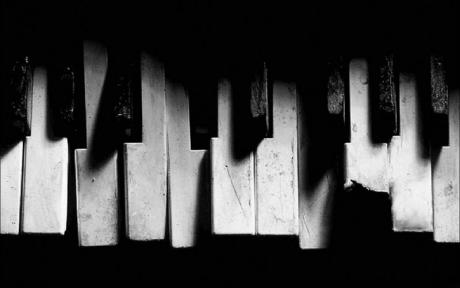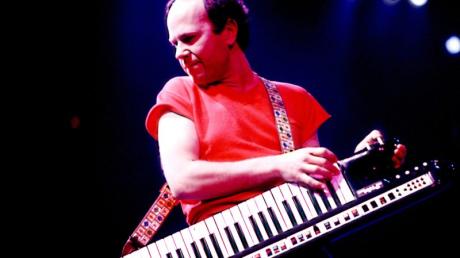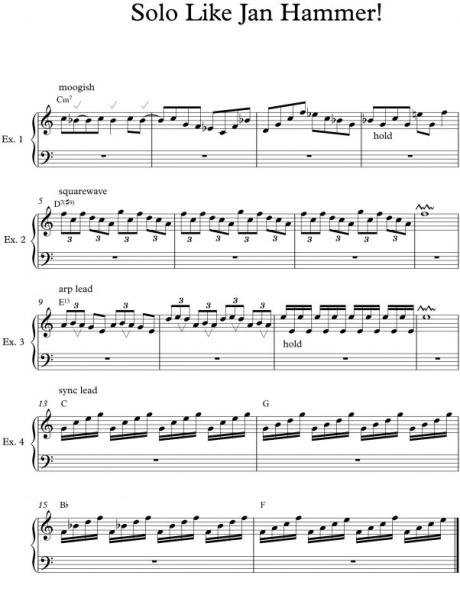Rockové klávesy - „Kytarová“ sóla Jana Hammera část 1.
Welcome readers! This month I wanted to talk about playing guitar-like solos on keyboard. One of the early pioneers of this style of playing was Prague’s own, Jan Hammer. Hammer was performing all throughout Europe at an early age and studied music and classical composition at Prague Academy of Musical Arts. In the early 1970s, he joined the original lineup of the Mahavishnu Orchestra where he was one of the first artists to play the Mini Moog synthesizer in a touring group. Hammer along with Herbie Hancock, Chick Corea and a few others literally wrote the book on analog keyboard solos. Many of these solos had a lot of characteristics in common with guitar solos. The mod wheels, portamento, and LFO were frequently used to mimic the bends and vibrato of guitarists. The solo sounds were also generally monophonic which had a more immediate sound and led to interesting techniques where notes could be held as others were played to create hammer-on effects. I’ve come up with a few examples below to help you get the feel.
Exercise 1: Mini Moog with bends
This example uses a monophonic Mini Moog sound with a touch of portamento and reverb. In bar 1, we use the pitch bender to bend the Bb up to a C. Each note sounds like a C but every other one has a rising pitch indicated by the check mark. I’ve included audio examples also, so you can see what I mean. Bar 2 uses notes from a C minor pentatonic scale (C, Eb, F, G, Bb, C) with 4th shapes in the end of the bar going into the beginning of bar 3 with notes coming from the C dorian mode (C, D, Eb, F, G, A, Bb, C). In the last bar, we hold the G to get a hammer-on effect. With a monophonic sound, only one note sounds at a time, so holding a lower or higher note while you play others is a really useful device.
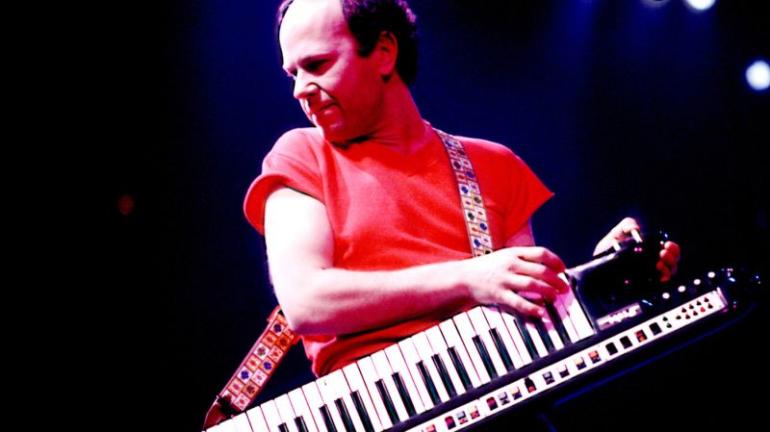
Exercise 2: Mono square wave with LFO
Example 2 uses a mono square wave with lots of portamento. This triplet phrase lies very easily under the fingers, and with a little practice you can get it very fast. You can also move the motif to the other notes in the scale. Here all the notes come from the D minor pentatonic scale (D, F, G, A, C, D). In the last bar we use the LFO to create a shake in the last held note.
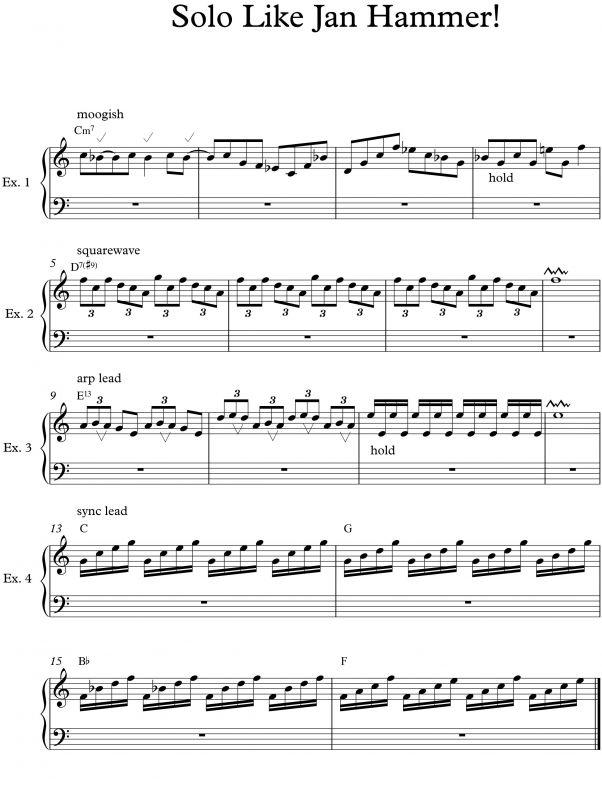
Glossary
Portamento: Plynulý přechod mezi dvěma tóny, někdy používáno jako synonymum pro glissando. Mezi těmito dvěma termíny je ve skutečnosti rozdíl, ale to by vydalo na samostatný článek. U monofonického (jednohlasého) syntezátoru se každopádně jedná o efekt, díky kterému při vázané (legato) hře výška tónu plynule klouže od jedné hodnoty k druhé. Projeví se to pouze tehdy, pokud novou notu vyšleme ještě dříve, než uvolníme tu předchozí. Rychlost toho přechodu většinou můžeme libovolně nastavit.
LFO: Low frequency oscillator, tedy nízkofrekvenční oscilátor. V podstatě se jedná o nastavitelnou křivku (zpravidla sinusoidu), ke které můžeme přiřadit určitý parametr. Pokud např. zvolíme parametr hlasitost, vznikne efekt tremolo. Pokud přiřadíme výšku tónu, dostaneme vibrato. Pokud pomocí LFO ovládáme filtr, může vzniknout „kvákavý“ efekt nebo další „vychytávky“.
